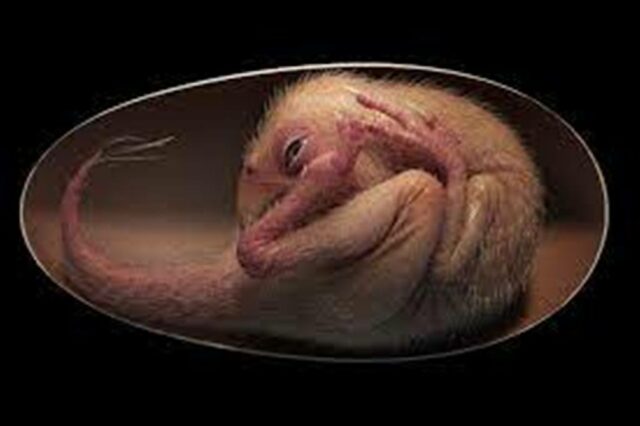Scientists announced last week the discovery of a perfectly preserved dinosaur embryo, dating to at least 66 million years ago and preparing to hatch from its egg. The fossil was discovered in Ganzhou, in southern China, and belongs to a theropod dinosaur without teeth, or oviraptosaurus, which the researchers dubbed “baby Yingliang.”
“It is one of the best dinosaur embryos ever found,” University of Birmingham researcher Fion Waisum Ma, co-author of the publication in the journal iScience, said. Ma and his colleagues found the embryo with its head positioned below its body, its feet on either side, and its back hunched, a posture that had not been observed before in dinosaurs but similar to that of modern birds.

In birds, this behavior is controlled by the central nervous system and is called “folding.” Chickens preparing to hatch place their heads under their right wing to keep it stable as they hatch with their beaks. Embryos that do not achieve this position have a greater chance of dying from a failed hatch. “This indicates that such behavior in modern birds first evolved among their dinosaur ancestors,” Ma said.
An alternative to that folding could be something similar to what modern crocodiles do, taking a position as if they are sitting with their head tilted towards the chest to hatch.
“Long egg thieves”
Oviraptorosaurs, or “long egg thieves,” were feathered dinosaurs that lived in what is now Asia and North America during the Upper Cretaceous period. They had various types of beaks and diets, and their size ranged from that of a modern turkey to that of the enormous Gigantoraptor, eight meters long. The “baby Yingliang” is about 27 centimeters long from head to tail and is found inside a 17-centimeter egg at the Yingliang Stone Nature History Museum.
Researchers believe the creature is from 66 to 72 million years old, and it was likely preserved by being buried by an avalanche, protecting it from scavengers for so long. It would have grown to two or three meters in length had it become an adult, and would probably have fed on plants.
Left in a deposit
The specimen is one of several egg fossils that have been left behind in a deposit for decades. The research team suspected they might contain unborn dinosaurs and scraped off part of the egg to discover the embryo inside.
“This dinosaur embryo inside this egg is one of the most beautiful fossils I have ever seen,” said Professor Steve Brusatte, from the University of Edinburgh and part of the research team, in a statement.
“This small dinosaur in its prenatal state closely resembles a baby bird hunched over in its egg, which provides further evidence that many of the characteristics of today’s birds evolved from their dinosaur ancestors,” he continued.
The team hopes to study “baby Yingliang” in more detail through advanced scanning techniques, to map his entire skeleton, including the bones of his skull, because part of his body is still covered by rock.

